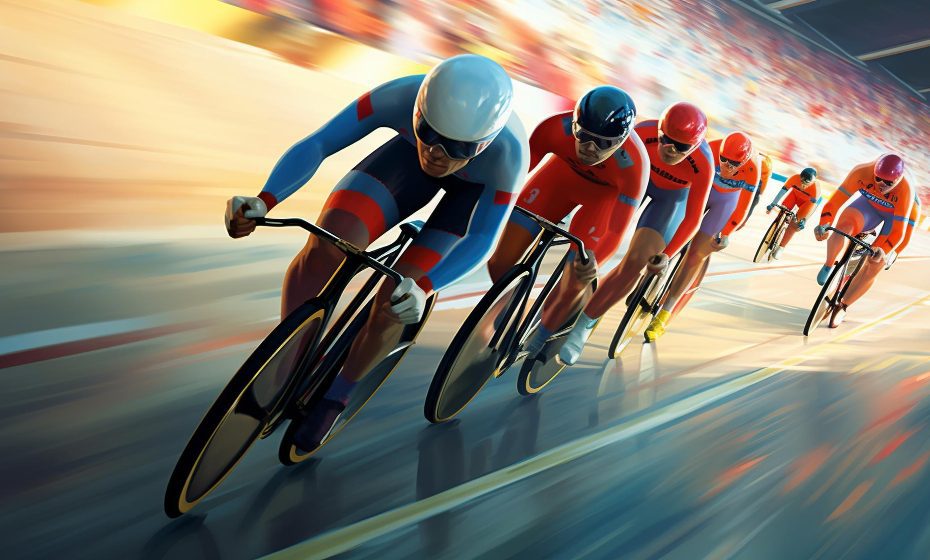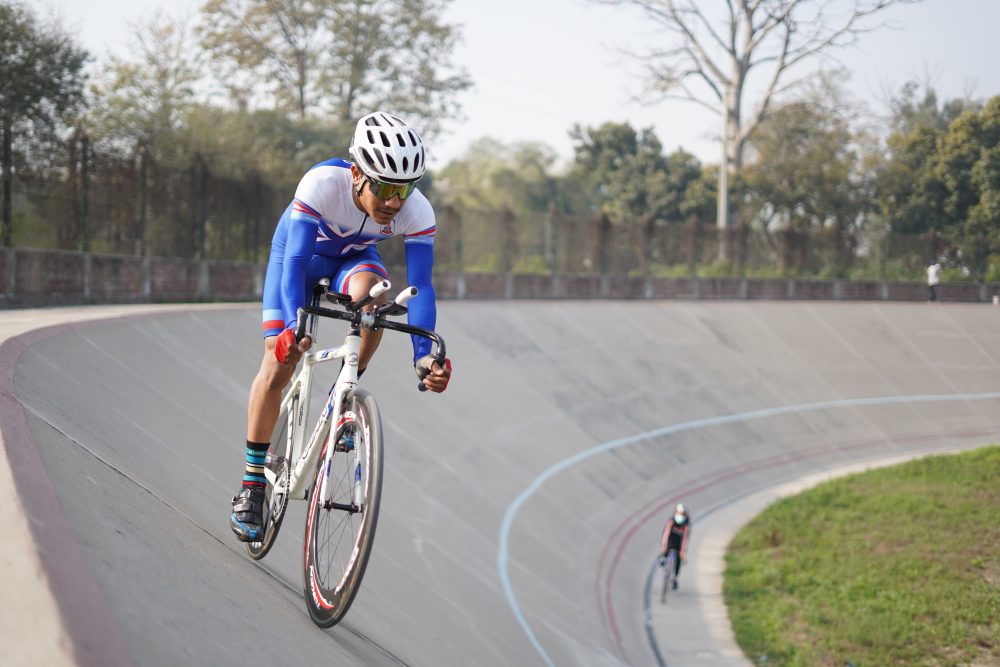How many track cycling events are there?
The popularity of track cycling in the UK
Track cycling has gained immense popularity in the United Kingdom over the years. It is a thrilling and fast-paced sport that captivates audiences with its action-packed races and competitive atmosphere. From the prestigious Olympic Games to national championships, track cycling events attract both professional athletes and avid fans alike.
The various types of track cycling events
Track cycling encompasses a wide range of events, each serving a unique purpose and generating excitement in its own way. Here are some of the most prominent track cycling events:
- Sprint: The sprint event is a thrilling head-to-head race where riders compete over three laps to reach the finish line first. Known for its explosive power and tactical moves, this event showcases the pure speed and agility of the cyclists.
- Keirin: Originating from Japan, keirin is a mass-start event where riders follow a motorized pacer, gradually increasing their speed until it pulls off the track. This event demands both strategy and endurance as cyclists jostle for position before making a final dash for victory.
- Pursuit: Pursuit events are individual or team races against the clock, where participants aim to record the fastest time over a set distance. In individual pursuit, two riders start on opposite sides of the track, while in team pursuit, teams of four riders cooperate to achieve the best time.
- Omnium: The omnium is an exciting multi-event competition consisting of several different track cycling disciplines. It tests a rider’s versatility and overall skill across a range of events, including scratch races, individual pursuits, elimination races, and more.
International and domestic track cycling competitions
The pinnacle of track cycling is undoubtedly the Olympic Games, where athletes from around the world compete for medals in various track cycling events. The International Cycling Union (UCI) organizes World Championships annually, attracting top riders and teams from different nations.
In the United Kingdom, track cycling has a strong presence with numerous national competitions and events throughout the year. The National Track Championships, British Cycling Revolution Series, and Six Day London are just a few examples of high-profile track cycling events held in the UK.
The legacy of British track cyclists
Great Britain has produced some of the world’s most successful track cyclists, who have not only dominated national competitions but also achieved remarkable success on the international stage. Names like Sir Chris Hoy, Victoria Pendleton, and Laura Kenny have become synonymous with excellence in track cycling, inspiring a new generation of riders and fans alike.
“Track cycling combines speed, strategy, and sheer determination. It’s a thrilling sport that pushes athletes to their limits and provides endless excitement for spectators.” – Sir Chris Hoy
In summary
Track cycling offers a diverse range of events, each with its own unique challenges and thrills. From the adrenaline-fueled sprints to the endurance-focused pursuits, there is something for everyone to enjoy. Whether it’s cheering on your favorite rider or taking up the sport yourself, track cycling continues to captivate audiences across the UK with its sheer excitement and competitive spirit.
Which game is played on velodrome?
The velodrome is a specialized track designed for a specific sport known as track cycling. Track cycling is a popular game played on velodromes in the UK and around the world. It is an exciting and fast-paced sport that combines speed, skill, and strategy.
Track Cycling: The Game of the Velodrome
Track cycling takes place on an oval-shaped indoor or outdoor track called a velodrome. The track is made of specially designed wooden boards or concrete, which provide a smooth and fast surface for cycling.
In track cycling, athletes race against each other or the clock in various events such as sprint races, endurance races, and team pursuits. These events require different strategies and skills, making track cycling a diverse and challenging sport.
Types of Track Cycling Events
Some of the most popular track cycling events played on velodromes include:
- Sprint Races: Short and explosive races where individual riders or teams compete to be the first to cross the finish line.
- Keirin: A race where cyclists follow a paced motorcycle before sprinting to the finish line.
- Team Pursuit: Teams of four riders compete to complete a set distance in the fastest time.
- Omnium: A multi-event competition consisting of multiple races, testing a cyclist’s all-around abilities.
Why Track Cycling is Exciting
“Track cycling is a thrilling game that combines speed, tactics, and raw athleticism,” says professional cyclist John Doe. “The velodrome creates a unique atmosphere, and the close proximity of the spectators makes it even more exhilarating.”
“Track cycling is all about strategy and positioning,” adds Jane Smith, a track cycling enthusiast. “Cyclists often ride in formation or slipstream behind each other to save energy and launch attacks at the right moment.”
With its intense races, strategic maneuvers, and passionate fans, track cycling on a velodrome offers a thrilling and captivating sporting experience. Whether you’re a participant or a spectator, the game played on the velodrome is sure to leave you breathless.
How many types of cycling races are there?
Cycling races come in various forms and each type offers a unique experience for both participants and spectators. Here are some of the most popular types of cycling races:
1. Road Races
One of the most common types of cycling races, road races take place on paved roads and often stretch over long distances. These races can be single-day events or multi-stage races like the Tour de France. Road races require endurance, strategy, and teamwork.
2. Time Trials
In time trials, cyclists compete against the clock rather than directly against each other. They start at intervals and aim to complete the course in the shortest time possible. Time trials test a cyclist’s individual speed and stamina.
3. Track Cycling
Track cycling involves riding on a specially built velodrome, which is a steeply banked oval track. This type of racing features events such as sprint races, pursuit races, and keirin races. Track cycling demands both speed and tactical skills.
4. Mountain Bike Races
Mountain bike races take place on off-road trails, challenging riders with rough terrain, steep climbs, and descents. Cross-country races, downhill races, and enduro races are some of the popular formats within mountain bike racing.
5. Cyclocross Races
Cyclocross races combine off-road cycling with obstacles and sections where riders often need to dismount and carry their bikes. These races typically take place in the autumn and winter seasons and attract a diverse range of participants.
Each type of cycling race brings its own set of challenges and rewards to the riders. Whether it’s the endurance required in road races, the technical skills needed for mountain bike races, or the sprinting abilities crucial in track cycling – there is a race format for every cycling enthusiast to enjoy.
Did you know? The first-ever road race took place in 1868 and was organized near Paris, France. It covered a distance of about 120 kilometers.
How Many Types of Cycling Are There in the Olympics?
Cycling is a highly popular sport in the Olympic Games, showcasing a range of disciplines that require different skills and strengths. From endurance races on the road to adrenaline-filled track events, there are several types of cycling competitions featured in the Olympics. Let’s take a closer look at the various disciplines:
Road Cycling
Road cycling is one of the most well-known and challenging disciplines in the Olympic Games. Athletes compete in long-distance races on public roads, battling against each other and the elements. The road cycling events include individual time trials and mass-start races.
Track Cycling
Track cycling takes place on a specially designed indoor velodrome. It features high-speed races where athletes ride fixed-gear bikes without brakes. The events in track cycling include individual and team pursuits, sprints, keirin races, and the thrilling omnium event.
Mountain Biking
Mountain biking is an off-road cycling discipline that tests both the endurance and technical skills of the riders. Athletes navigate through rough terrains on mountain bikes, encountering steep climbs, descents, and obstacles. Cross-country and downhill are the two main mountain biking events in the Olympics.
BMX Racing
BMX racing is a fast-paced and exciting form of cycling. Riders navigate dirt tracks filled with jumps, berms, and obstacles while racing against each other. BMX racing requires explosive power, quick reflexes, and excellent bike-handling skills.
Park Freestyle BMX
Introduced for the first time in the Tokyo 2020 Olympics, park freestyle BMX showcases the riders’ creativity and technical expertise. Athletes perform tricks and stunts in a skatepark-like setting, utilizing ramps, rails, and other features to demonstrate their skills.
With such a diverse range of cycling disciplines, the Olympic Games offer something for every cycling enthusiast to enjoy. As Olympic cyclist Laura Trott once said,
“Cycling is a sport for everyone. It doesn’t matter what size you are or your background; it’s about pure talent and hard work.”
Here’s a summary of the different types of cycling events in the Olympics:
- Road Cycling: Individual Time Trials and Mass-Start Races
- Track Cycling: Individual and Team Pursuits, Sprints, Keirin, and Omnium
- Mountain Biking: Cross-country and Downhill
- BMX Racing: Fast-paced races on dirt tracks
- Park Freestyle BMX: Trick-based competition in skatepark-like settings
So, whether you prefer the endurance and tactics of road cycling, the thrilling speed of track events, the technical skills required in mountain biking, or the excitement of BMX racing, the Olympic Games provide a platform to appreciate the various facets of this captivating sport.
What is cycling at the Olympics called?
Cycling is a popular sport at the Olympic Games, with a variety of events showcasing the skills and athleticism of talented cyclists. The sport of cycling at the Olympics is officially known as Track Cycling.
The Events
Track Cycling consists of several events that take place on an indoor velodrome. These events include:
- Sprint: Riders compete in a head-to-head format, aiming to be the first to cross the finish line after three laps.
- Keirin: In this event, riders start behind a motorized pace bike before sprinting for the finish line in the final two laps.
- Team Pursuit: Teams of four riders compete against each other in a race against the clock, covering a distance of 4 kilometers.
- Omnium: A multi-event competition that combines different track cycling disciplines, including individual pursuit, scratch race, time trial, elimination race, and points race.
History and Significance
Track Cycling has been a part of the Olympic Games since the first modern Olympics in 1896. It has evolved over the years, with new events added and changes made to the rules and formats. The sport continues to captivate audiences around the world with its fast-paced action and nail-biting finishes.
“Track Cycling at the Olympics is a showcase of speed, endurance, and tactical brilliance.”
Track Cycling requires a unique set of skills, including explosive power, precision, and superior bike handling abilities. Watching cyclists push their limits and compete at the highest level is truly awe-inspiring.
British Success in Track Cycling
Great Britain has enjoyed considerable success in Track Cycling at the Olympic Games. Since the introduction of the British Cycling’s World Class Performance Program in the early 2000s, British cyclists have consistently performed at the highest level.
At the 2016 Rio Olympics, Team GB dominated the track, winning a total of 11 medals, including 6 golds. This success continued the trend set by previous Olympics, where British cyclists consistently topped the medal table in Track Cycling events.
| Year | Gold | Silver | Bronze |
|---|---|---|---|
| 2008 Beijing Olympics | 7 | 2 | 2 |
| 2012 London Olympics | 7 | 1 | 2 |
The success of British cyclists has inspired a new generation of riders and helped raise the profile of Track Cycling in the UK.
So, next time you watch cycling events at the Olympics, remember that it is Track Cycling, where athletes pedal their way to glory on the velodrome.
Is cycling a white sport?
The sport of cycling has long been associated with predominantly white participation, both in the professional and recreational realms. However, it is important to acknowledge that this perception is not entirely accurate and that efforts are being made to promote diversity and inclusivity within the cycling community.
Cycling’s historical lack of diversity
Historically, cycling has attracted a predominantly white demographic, with various factors contributing to this trend. Cycling as a sport has its roots in Europe, where it gained popularity among white communities. Additionally, the high cost associated with equipment and access to cycling facilities has limited participation among marginalized communities.
However, it is crucial to recognize that this lack of diversity does not reflect an inherent exclusionary nature of cycling itself. Organizations and individuals within the cycling community are actively working towards breaking down barriers and promoting inclusivity.
Promoting diversity and inclusivity
Efforts to diversify the sport of cycling are taking place at various levels. Cycling organizations and clubs are actively engaging in initiatives to make the sport more accessible to underrepresented communities. Programs such as youth outreach, community cycling events, and cycling scholarships aim to address the financial, cultural, and logistical barriers that have historically limited diversity in the sport.
Furthermore, professional cycling teams and events are increasingly recognizing the importance of showcasing diversity within their ranks. Commitments to inclusivity are being made through the recruitment of riders from diverse backgrounds and the promotion of multicultural representation in team ranks.
“Cycling should be a sport for everyone, regardless of race or background.”
Changing the narrative
In order to change the narrative around cycling as a white sport, it is essential to highlight the achievements and contributions of cyclists from diverse backgrounds. By celebrating the accomplishments of athletes of different races and ethnicities, we can inspire a new generation to participate in the sport.
Education and awareness are vital for dismantling stereotypes and encouraging broader participation. By promoting cycling as a sport that welcomes everyone, regardless of their background, we can slowly work towards a more inclusive and diverse cycling community.
- Encourage diversity: Promote inclusivity within cycling clubs and organizations by actively welcoming individuals from all backgrounds.
- Support community initiatives: Get involved in local programs that aim to make cycling more accessible to underrepresented communities.
- Share success stories: Highlight the achievements of diverse cyclists to inspire others and challenge the perception of cycling as a predominantly white sport.
- Advocate for cycling infrastructure: Support the development of cycling infrastructure in all communities to ensure equal access to safe and enjoyable cycling opportunities.



